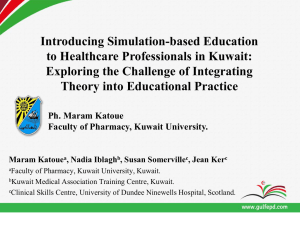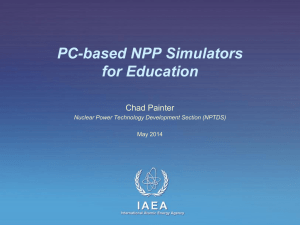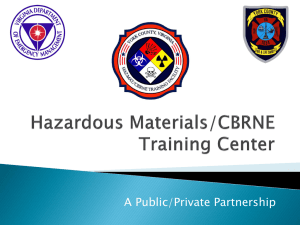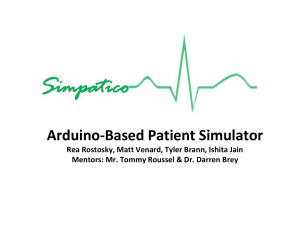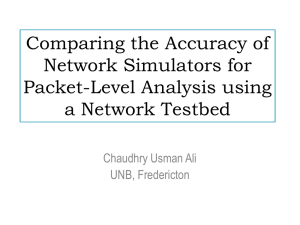RSQSim
advertisement
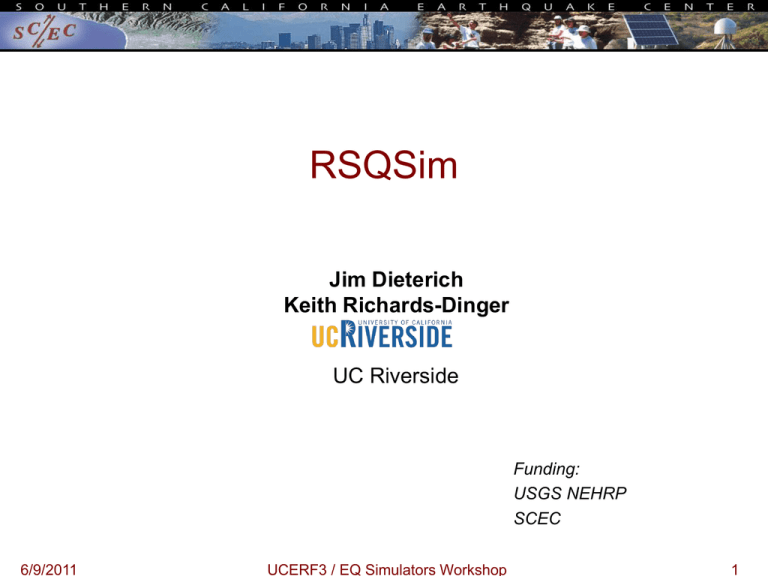
RSQSim Jim Dieterich Keith Richards-Dinger UC Riverside Funding: USGS NEHRP SCEC 6/9/2011 UCERF3 / EQ Simulators Workshop 1 Representation of Fault Friction • Constitutive relation: • State evolution: • Stress evolution: • • • • 6/9/2011 Terms in red are additional ones due to normal stress variations (Linker and Dieterich, 1992) Interaction coefficients, K, calculated from the dislocation solutions of Okada, 1992 Tectonic stressing rates derived from backslipping the model Numerical integration too slow for the scale of problems we would like to address UCERF3 / EQ Simulators Workshop 2 Representation of Fault Friction • Constitutive relation: • State evolution: • Stress evolution: State 0: locked fault State 1: nucleation State 2: seismic slip 6/9/2011 UCERF3 / EQ Simulators Workshop 3 Representation of Fault Friction • No predetermined failure stress or stress drop • Stress drop scales roughly as 6/9/2011 UCERF3 / EQ Simulators Workshop 4 Representation of Fault Friction • No predetermined failure stress or stress drop • Stress drop scales roughly as 6/9/2011 UCERF3 / EQ Simulators Workshop 5 Approximations to Elastodynamics Parameters that influence the rupture process: • Slip speed during coseismic slip determined from shear impedance considerations • Reduction of a on patches nearby to seismically slipping patches • Stress overshoot during ruptures 6/9/2011 UCERF3 / EQ Simulators Workshop 6 Effect of Overshoot on Rupture Characteristics Large overshoot (13%) Small overshoot (1%) 6/9/2011 UCERF3 / EQ Simulators Workshop 7 Approximations to Elastodynamics Values for rupture parameters determined by comparison with fully dynamic rupture models DYNA3D – Fully dynamic finite element simulation Propagation time 14.0 s RSQsim – Fast simulation Propagation time 14.3 s 6/9/2011 UCERF3 / EQ Simulators Workshop 8 Smooth Initial Stress (w/ block of higher normal stress) 6/9/2011 UCERF3 / EQ Simulators Workshop 9 Representation of Viscoelasticity afterslip • Rate-strengthening (a > b) patches – Approximated as always sliding at steady-state – Distributed as • Deep creeping extensions to major faults • Shallow creep on major faults • Entire creeping sections (e.g. SAF north of Parkfield) – Possibly with small imbedded stick-slip patches • More complicated mixed stick-slip and creeping areas (e.g. Hayward Fault) 6/9/2011 UCERF3 / EQ Simulators Workshop 10 Representation of Viscoelasticity afterslip Penetration of slip of large events into creeping zone 6/9/2011 UCERF3 / EQ Simulators Workshop 11 Representation of Viscoelasticity afterslip Fraction of moment release in creeping section Aftershocks 6/9/2011 UCERF3 / EQ Simulators Workshop 12 Representation of Viscoelasticity afterslip Small repeating earthquakes Simulation Omori' s law 6/9/2011 Rt 1989 Loma Prieta Earthquake 1 Omori' s law Rt 1 UCERF3 / EQ Simulators Workshop 13 Power-law temporal clustering Stacked rate of seismicity relative to mainshock origin time Decay of aftershocks follows Omori power law t -p with p = 0.77 Foreshocks (not shown) follow an inverse Omori decay with p = 0.92 6/9/2011 Dieterich and Richards-Dinger, PAGEOPH, 2010 UCERF3 / EQ Simulators Workshop 14 Power-law temporal clustering Interevent Waiting Time Distributions California Catalog 1911 – 2010.5 6/9/2011 UCERF3 / EQ Simulators Workshop 15 Power-law temporal clustering Space – Time Distributions 6/9/2011 UCERF3 / EQ Simulators Workshop 16 Earthquake cluster along San Andreas Fault M7.3 43 aftershocks in 18.2days All-Cal model – SCEC Simulator Comparison Project 6/9/2011 UCERF3 / EQ Simulators Workshop 17 Earthquake cluster along San Andreas Fault M6.9 Followed by 6 aftershocks in 4.8 minutes All-Cal model – SCEC Simulator Comparison Project 6/9/2011 UCERF3 / EQ Simulators Workshop 18 Earthquake cluster along San Andreas Fault M7.2 All-Cal model – SCEC Simulator Comparison Project 6/9/2011 UCERF3 / EQ Simulators Workshop 19 Colella et al., submitted 6/9/2011 Slow-slip events UCERF3 / EQ Simulators Workshop • • slip ~2.3 - 4.0 cm • inter-event time ~10-19 months • simultaneous slip in different areas • • no Omori clustering duration ~10-40 days spontaneous segmentation 20 Summary or Conclusions (if appropriate or desired) 6/9/2011 UCERF3 / EQ Simulators Workshop 21


